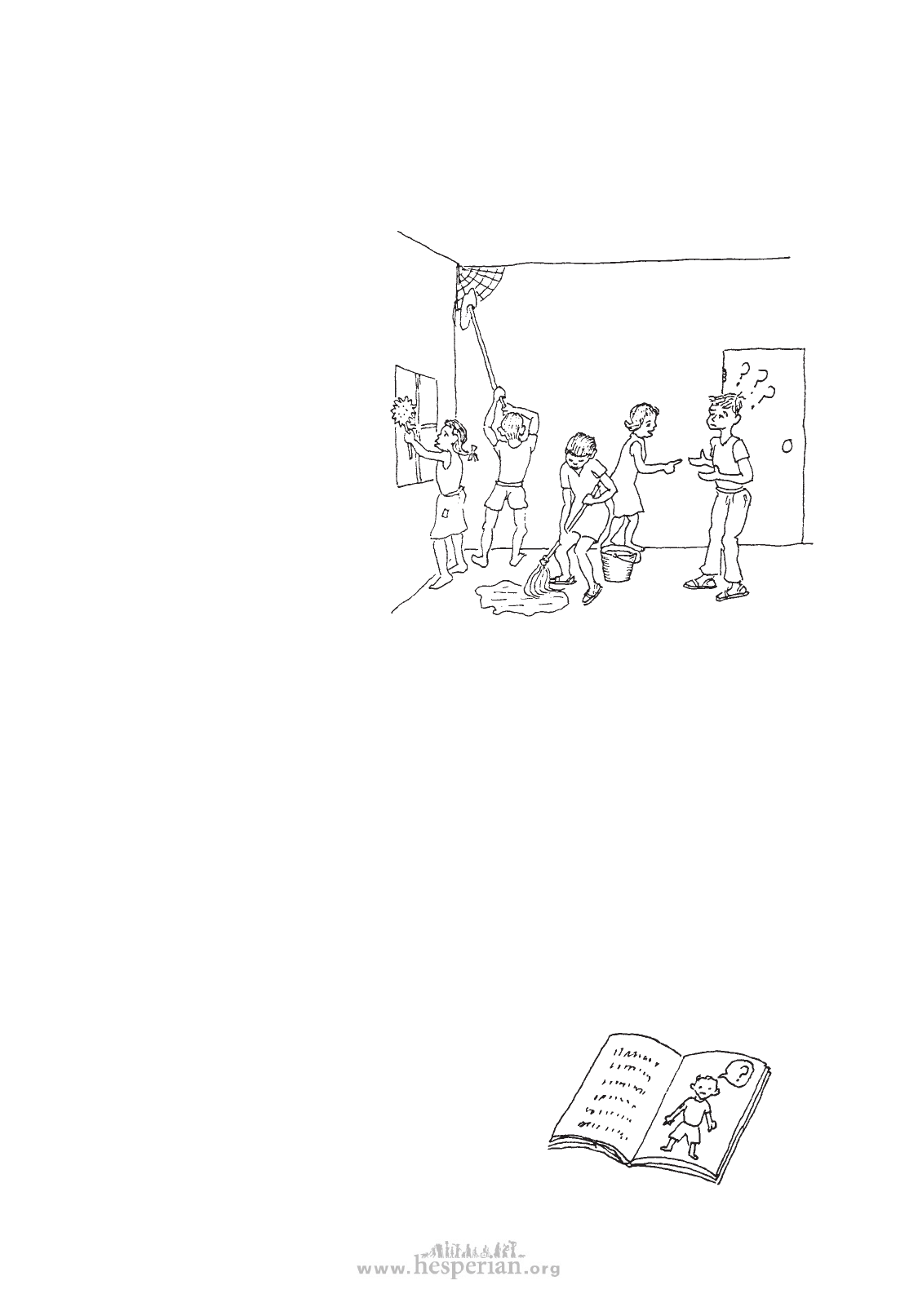
CHILD-to-child
Role playing
You can also use role plays or skits to explore the difficulties of a child who does
not understand, and how to help him understand. For example:
Ask 5 children to put on the role play.
They can pretend to be
cleaning house. But before
they start, ask one child to
go out of the room. Tell the
other 4 that after they have
cleaned for awhile, they
should turn to the 5th child
and say, “Blah, blah, blah,
blah.” Tell the 4 children that
this means, “Go get some
water!’ But the 5th child will
not know this.
Tell the 4 children to
keep saying the words,
and then to add other
ways to help the 5th child
understand.
The 5th child comes back
and they begin.
Divide the class in groups of 5 (or more) and repeat the game. Have the children
think of different situations and different meanings for “Blah, blah, blah, blah.”
Afterwards, discuss with the whole class:
• How did the child feel who did not understand?
• How did the others feel?
• What did the others do to help the child understand?
• What else could they have done?
443
Follow-up activity: Write or tell a story
The story might begin by one child waking up one morning and not understanding
anything anyone says.
Each child in the class writes or tells the rest of the story in his and her own way.
Invite them to draw pictures with their stories.
Ask the children to include in their stories ideas
for helping the child understand.
This activity could be done in a language or
writing class. After they have written the stories,
the children can read them to classes of younger
children.
disabled village children